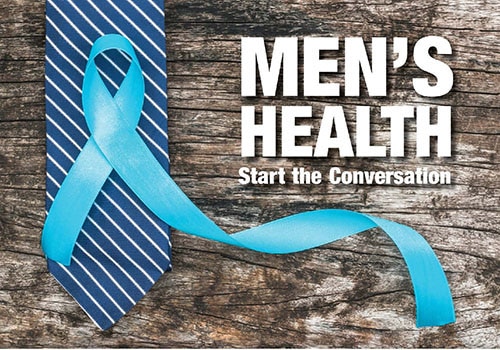
National Men’s Health Week is observed each year as the week leading up to and including Father’s Day. This observance serves as a reminder for men to take steps to be healthier, but they don’t have to do it alone! Whether it’s your partner, dad, brother, son, or friend you can help support the health of the men in your life.
Men's Health Step by Step
Healthy Habits
Eat Healthy: Visit the MyPlate Plan to find out how much and what foods you need, based on your height, weight, age, and physical activity level.
Be Physically Active: Check out the Move Your Way Activity Planner to set your own weekly goals, choose the activities you want to do, and get personalized tips to help you stay motivated.
Avoid Tobacco Products: It’s never too late to quit smoking. Quitting smoking now improves your health and reduces your risk of heart disease, cancer, lung disease, and other smoking-related illnesses. Start your quitting journey today!
Manage Stress: Not all stress is bad, but long-term stress can lead to health problems. Preventing and managing long-term stress can lower your risk for other conditions like heart disease, obesity, high blood pressure, and depression. Learn more about managing stress.
Limit Alcohol: If you choose to drink alcohol, do so only in moderation. Refer to the Dietary Guidelines for Alcohol for more information.
Regular Check Ups
Prevention starts with seeing a healthcare provider on a regular basis. Adult men in the United States visit primary care providers at lower rates than adult women. Establishing baselines for factors such as blood pressure, cholesterol, and weight—and monitoring how they change over time—will enable the provider to catch potentially dangerous conditions early, when they’re still treatable. Use the MyHealthfinder tool to get personalized preventive services recommendations. Print out the list and take it with you to your next appointment with your health care provider.
Recognize the Signs and Symptoms of Heart Disease
Heart disease is the leading cause of death for men in the United States, and half of the men who die suddenly from it have “silent” coronary heart disease, meaning that they have no previous symptoms. Therefore, diagnosis of heart disease may come only after men experience symptoms of a heart attack, heart failure, or an arrhythmia, which may include:
- Heart attack: Chest pain or discomfort, upper back or neck pain, indigestion, heartburn, nausea or vomiting, extreme fatigue, upper body discomfort, dizziness, and shortness of breath.
- Heart failure: Shortness of breath, fatigue, or swelling of the feet, ankles, legs, abdomen, or neck veins.
- Arrhythmia: Fluttering feelings in the chest (palpitations).
Recognize the Signs of Depression and How to Seek Help
Signs and symptoms of depression can be difficult to recognize, leading many people—and especially men—to be undiagnosed and untreated. For example, a person may appear angry instead of sad, report physical symptoms instead of emotional ones, and/or use unhealthy coping behaviors to mask their mental health issue. The good news is that depression can get better with treatment. If you or a loved one are unsure of where to go for help, ask your health care provider. You can also find resources online including the NIMH Help for Mental Illness or check with your insurance carrier to find providers who participate in your plan. Hospital doctors can help in an emergency.
Men's Health Toolkit


